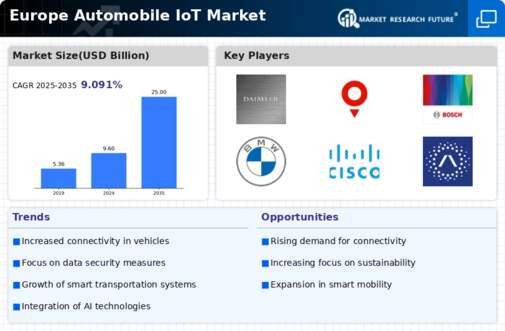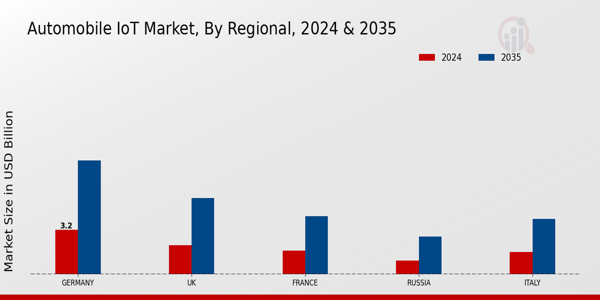The Europe Automobile IoT Market presents a dynamic and rapidly evolving landscape characterized by the integration of advanced technologies in vehicle operations, including connectivity, data analytics, and enhanced user experiences. As vehicles become more intelligent and interconnected, the competition among key industry players intensifies, fostering innovation and investment in IoT capabilities.
Stakeholders within this market are not only focused on traditional automotive manufacturing but are also exploring partnerships with technology firms, telecommunications providers, and software developers to enhance their offering and meet the growing consumer demand for smart, connected vehicles.
With stringent regulations promoting safety, sustainability, and environmental considerations, companies are navigating complexities while capitalizing on opportunities to deliver value-added services that cater to diverse consumer needs.
Daimler is a prominent player in the Europe Automobile IoT Market, leveraging significant strengths that contribute to its competitive edge. The company’s investments in research and development have enabled it to innovate in areas such as autonomous driving, connectivity, and fleet management systems.
Daimler’s strong brand recognition and reputation for quality and reliability foster customer loyalty, while its extensive dealer and service network across Europe ensures effective distribution and maintenance capabilities. The company is also committed to sustainability, actively developing electric and hybrid vehicles integrated with IoT solutions that enhance performance and efficiency.
By focusing on smart mobility solutions, Daimler is positioned to lead in the evolution of intelligent transportation systems, paving the way for new business models and advanced in-car services that are expected to reshape user experiences.
TomTom operates distinctly within the Europe Automobile IoT Market, recognized for its strong presence in navigation and mapping services, contributing significantly to IoT applications in the automotive sector.
The company offers a range of key products related to real-time traffic information, fleet management solutions, and location-based services tailored for automotive manufacturers and service providers. TomTom's strengths lie in its advanced data analytics capabilities and partnerships with automotive OEMs that facilitate the integration of its technologies into vehicles.
Mergers and acquisitions have bolstered its service offerings, allowing it to enhance its product portfolio and expand its market reach effectively. By focusing on smart mobility solutions, TomTom aims to meet the evolving demands of consumers and enterprises in Europe, providing critical insights that support safer and more efficient transportation systems.
























Leave a Comment